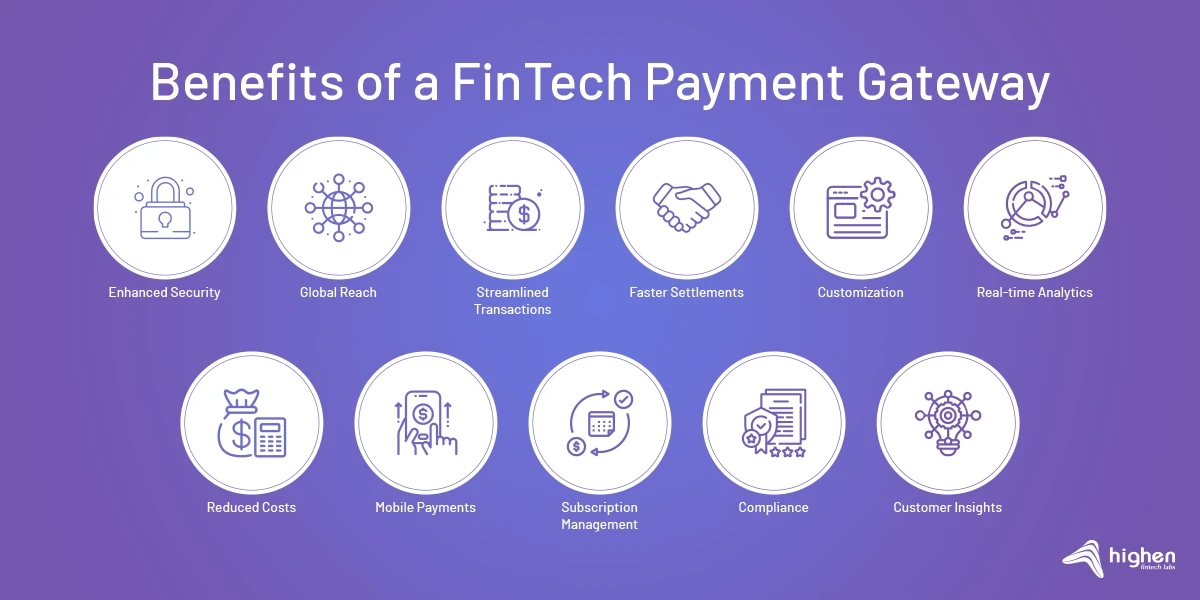Navigating the sea of fintech gadgets can be like finding a needle in a haystack. But fret not! How to choose a fintech payment platform just got simpler. You want a system that clicks with your business heartbeat and wows your customers, right? Security is a big deal, too; let’s not forget those nasty fraud goblins lurking around. You’re also hunting for value—all the bells and whistles but at a fair price. And if you’re dreaming big (aren’t we all?), you’ll need some snazzy features that play well with others as your empire grows. Let’s buckle up and dive into this ultimate decision guide tailored just for you.
Understanding Your Payment Platform Needs
Assessing the Financial Ecosystem of Your Business
Before choosing a fintech solution, think about your business money needs. Look at how money moves in and out and list what matters most. These could be payment speed, cost, or data tracking. This step is key to finding a platform that fits like a glove.
Next, look at your sales info and payment flow charts. This shows you where a new system can help. Ask what tools your current setup lacks. Maybe you need quicker payment processing or simpler steps for your customers. You may find that secure transaction platforms top your list.
Identifying Your Customer Payment Preferences
Now, turn your eye to the people who hand you money; your customers. What payment methods do they like? Today, digital payment options like online systems and mobile payment applications are big. But, remember to check for other needs too.
Start by chatting with your customers. Ask them clear questions about how they like to pay. Look at the common answers. Your goal is to make their payment process as smooth as possible. This helps keep them happy and coming back to buy more.
Keep in mind, in some cases, folks might want to use digital wallets, while in others, they might favor credit cards or mobile apps. Your job is to match your platform to what they use most.
To sum up, get to know your business needs inside out. Check what’s lacking and needed. Then, chat with your customers about their favorite payment ways. These steps will guide you to the right fintech solution that nails both security and ease of use. And a good fit will serve your business well for a long time.
Evaluating the Security and Compliance Features
Analyzing Financial Technology Security Measures
When you’re choosing a fintech platform, think safety first! Secure transaction platforms are key. You need to know your money and info are safe. Look for signs like encryption and fraud detection. Good fintech solutions compare well in how they fight off bad guys. Ask, “How does this platform protect me?”
Security is a big deal in fintech. Companies work hard to make sure they keep your data safe. They use strong tools to encrypt your info. This means they scramble it up so only the right people can read it. They also watch for any strange activity. If something looks odd, they check it out fast to keep you safe.
Mobile payment applications, for example, have layers of security. They may ask for a fingerprint or a special code to make sure it’s really you using it. You want this kind of attention to safety in any digital payment options you pick.
Remember, when you read about financial technology security, look for details. You want to see how they actually keep things locked down.
Reviewing Compliance with EMV and PCI DSS Standards
Now, let’s chat about some serious rules – EMV and PCI DSS. These are like the referees in the payment game. They make sure fintech platforms play right. Sticking to these standards means they’re serious about keeping your card info safe.
EMV stands for a smart chip in your card. It’s a tiny computer that talks to the payment reader. It’s much safer than the old magstripe. PCI DSS is a set of rules that all companies must follow if they deal with credit cards. It stands for Payment Card Industry Data Security Standard.
See, each time you buy something, that data zooms through lots of places. PCI DSS checks that your data is well looked after at each spot. These standards are there to push down the risk of sneaky folks stealing your details. They also check that platforms can handle many different kinds of cards. You don’t want to be stuck at checkout because your card type isn’t accepted.
When selecting financial tech solutions, find out if they meet these standards. Just ask, “Is this platform EMV and PCI DSS compliant?” You want a yes. It means you can trust them more with your card.
So, dig into the security of fintech platforms. Check their locks and ask about the rules they follow. You’ll find the right fit with a platform that keeps you and your money safe. This is the kind of peace of mind you want when dealing with money online.
Comparing Cost-Effectiveness and User Experience
Deciphering Payment Processing Fees and Pricing Models
How much will you pay for transactions? When selecting financial tech solutions, you’ll often see a variety of pricing models. Some fintech services charge a flat fee per transaction, while others might take a percentage. This is a critical step in the evaluation of payment systems, as fees can add up fast and eat into your profits.
To find the best option, compare the cost of different digital payment options. Consider not just the fees but also the benefits of e-payment services. Some may offer lower fees but lack critical features or customer support. Look for a balance between cost and value. Secure transaction platforms and payment gateway features can be worth extra fees for the peace of mind they provide.
Ensuring Ease of Use and Customer Support Quality
Next, how easy is it to use the platform? User experience in fintech is huge. If your system is tough to use, you and your customers will be unhappy. Seek out mobile payment applications and fintech solutions that are simple for you and them. Check out online reviews or ask for demos. This gives you a feel for the platform’s ease of use before you commit.
Finally, how solid is the customer service? Good customer support in fintech is vital. It’s a part of the fintech platforms ease of use. If you hit a snag, you need help fast. The best digital wallet or B2B payment solutions come with great support. To check this, send a question before you sign up. See how fast they answer and how helpful they are.
Remember to consider these areas in your fintech solutions comparison. They can make or break your experience. With careful evaluation, you’ll find a fintech service that’s both cost-effective and user-friendly.
Exploring Advanced Features and Integration Capabilities
Investigating Support for Multi-Currency and Cross-Border Payments
When you pick a fintech platform, ask this: “Can it handle money from different countries?” The quick answer: You want a ‘yes’. Many good platforms will say ‘yes’. This means they let you take and send money in more than one kind of currency.
This is key if you sell to folks not in your country. Or, if you plan on going big and reaching new markets outside your home base. This feature cuts hassle in dealing with money across borders. It saves time, helps in price setting, and makes customers happy.
Look at how well a platform handles foreign money. See if it’s easy to use and makes sense to you. Some might have extra fees for currency changes. Think about these costs when choosing. They can add up! Good platforms also guard against shifts in currency value. This saves you from losing money if rates change fast.
Understanding API and SaaS Solution Offerings for Scalability
Now let’s talk about how well a platform can grow with you. Can it fit more users and more sales as your business gets bigger? A fintech platform should grow with you, not hold you back.
API stands for ‘Application Programming Interface’. Sounds complex, but it’s not. It helps your business apps talk to each other. Good fintech uses APIs to connect your bank, sales, and other services. This means you get reports and info all in one spot.
SaaS, or ‘Software as a Service’, means you use the software online. You don’t have to own it. This is great for small businesses. It’s often more cost-effective and easier to manage. SaaS options usually update on their own. This keeps you with the newest tools without extra work.
Great fintech platforms use both APIs and SaaS. They make your life easier and help your business adapt and grow. When picking a platform, watch for easy ways to use these tech tools.
In short, for your business to grow and stay up to date, choosing a financial tech solution that handles all types of money and scales with your growth is key. It should give you the tools to manage money and business tasks easily. This opens the door to new chances and keeps your business moving up.
In this post, we dug deep into what to look for in a payment platform. We started by looking at your business’s money needs and what your customers like to use when they pay. Security is also key, so we checked how payment tools keep your data safe and meet tough standards.
Then, we talked about costs and how the platform feels to use. No one wants to pay too much or fight with a hard tool. Finally, we looked at fancy extras like handling different money types and growing your business with tech.
My final thought? Choose a platform that fits your business now and as it grows. It should be easy for customers, not break the bank, and keep data safe. Pick the right tool, and you’ll be set up for success.
Q&A :
What factors should I consider when selecting a fintech payment platform?
When choosing a fintech payment platform, you should consider transaction fees, security features, user experience, compatibility with your existing systems, and the types of payment methods accepted. Additionally, evaluate the customer service quality, the platform’s scalability, the ease of integration, and the compliance and regulatory support it provides.
How does the security of a fintech payment platform impact my choice?
Security is a critical component of any fintech payment platform. A secure platform should adhere to industry standards such as PCI DSS and employ encryption methods, fraud detection systems, and other security measures to protect sensitive data. Ensure the platform you select is up-to-date with the latest security protocols to minimize risks associated with online transactions.
Are there specific features I should look for in a fintech payment platform to improve user experience?
Yes, look for features that streamline the payment process, such as one-click checkouts, mobile-optimized interfaces, and multilingual and multi-currency support. Convenience features like saved payment methods and digital wallet support can also enhance the user experience. A platform with a user-friendly dashboard and real-time analytics will be an added advantage for both you and your customers.
How important is the scalability of a fintech payment platform for a growing business?
Scalability is incredibly important for a growing business. Choose a fintech payment platform that can handle an increasing volume of transactions without performance issues. The platform should also be capable of expanding its services and features to support new payment methods, additional currencies, and international transactions as your business grows.
Can the choice of a fintech payment platform affect my business’s compliance with financial regulations?
Yes, the choice of a fintech payment platform can directly affect your business’s ability to comply with financial regulations. A reliable platform should ensure compliance with relevant local and international regulations, including anti-money laundering (AML) and know your customer (KYC) requirements. Select a platform that helps manage compliance and keeps your business protected from potential legal and financial penalties.






